Search Results for 'Douglas Hyde'
25 results found.
Tomás Bán Concannon

Tomás Bán Concannon was born on Inis Meáin 150 years ago on November 16, 1870, the son of Páidin Concannon and Annie Faherty. He was called ‘bán’ because of his blond hair and to differentiate him from other neighbours of the same name. He was educated on the island and, unusually for an islander, in the Monastery School in Galway. When he was 15 his brother brought him to America where he went to a number of colleges and attended Eastman College in New York where he graduated with an MA in accountancy. He spent some time working in a business selling rubber stamps, then in his brother’s vineyard in California, and he later set up a business in Mexico. It was there he came across a journal called Gaodhal published by Conradh na Gaeilge in the US. So he learned to read and write in Irish in Mexico.
The man from New York
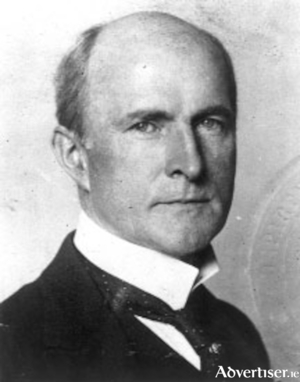
The first time Lady Gregory met John Quinn was on Sunday August 31 1902 at a Feis Ceol she had partly organised in the memory of Ó Raifteirí the poet. The occasion also marked Lady Gregory’s first steps into the Celtic revival movement which would absorb her energies throughout her long life, and define her reputation for ever.
Normal people disgusted at the Abbey Theatre’s Playboy.
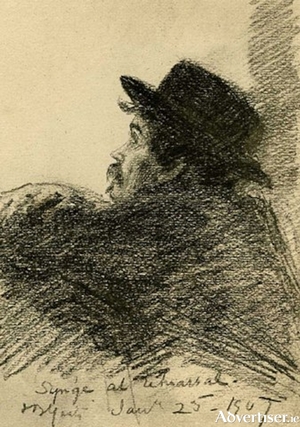
Famously WB Yeats was giving a lecture in Aberdeen on Saturday evening January 26 1907, the opening night of the Playboy of the Western World at the Abbey Theatre in Dublin. Just before his lecture started he received a telegraph from Lady Gregory to say the first act was well received.
The names on the Autograph Tree at Coole
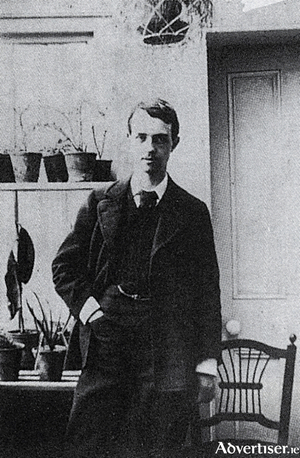
It may seem out of place that the name Robert (known as Robbie) Ross is associated with probably the best known literary monument in Ireland, namely the autograph tree at Coole Park. With the exception of two soldiers’ names, all 24 others are poets, writers and artists all of whom Lady Gregory believed were worthy to be included in her particular and original ‘hall of fame.’
‘I am an international socialist,’ shouted Pádraic Ó Conaire
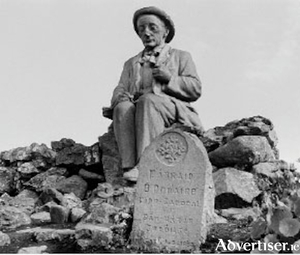
In his famous statue of the writer and Irish scholar Pádraic Ó Conaire, the sculpture Albert Power presents a brilliant likeness to the man Galway knew as he went about the town. Liam Ó Briain, a friend and fellow Irish enthusiast, remarked that Albert Power had captured exactly how the man looked. Meeting Ó Conaire in town one evening, Ó Briain remembered that he looked in reality as he is on the statue: ‘the stick in his right hand, the little hat on his head’, a face that could show his ‘puckish humour.’ *
Gregory grandson reads ‘An Irish Airman’ at RAF centenary celebration
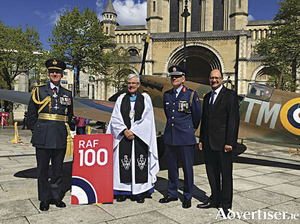
A great grandson of Galway's World War I fighter ace Major Robert Gregory, Robin Murray Brown, read WB Yeats' famous poem An Irish Airman Foresees His Death in Belfast last Sunday. St Anne's Cathedral was filled to capacity for a service to commemorate the centenary of the Royal Air Force (RAF), which succeeded the Royal Flying Corps in which Major Gregory flew. Major Gregory joined the war effort in 1916 and was awarded the Military Cross for gallantry. He was also awarded the Legion d’Honneur — France’s highest honour.
The dreary weather cannot dampen our spirits
Well, I had a lovely event last Saturday night. Ray D’Arcy had invited me on to his chat show and I really enjoyed the chat with him and with so many of the audience I met afterwards.
Sport and education - the recipe for success
I am always going on and on about rugby and, this week, I am going to begin with a nice spot of good GAA news for County Westmeath.
Letter from Behan among the interesting items as Conradh na Gaeilge deposit archives at NUI Galway
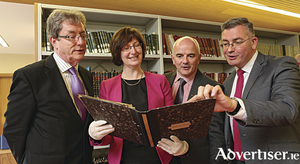
NUI Galway is to become custodian of the extensive archives of Conradh na Gaeilge, Ireland’s oldest Irish language organisation which celebrates its 125th anniversary next year. Conradh na Gaeilge has agreed to permanently deposit archival material spanning over a century of its existence, providing an unparalleled insight into linguistic, cultural, social and political aspects of Ireland’s past.

